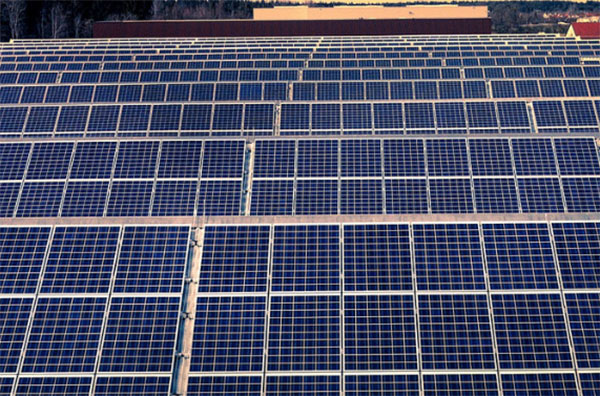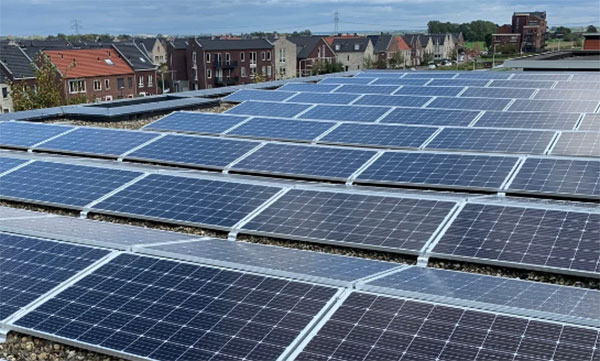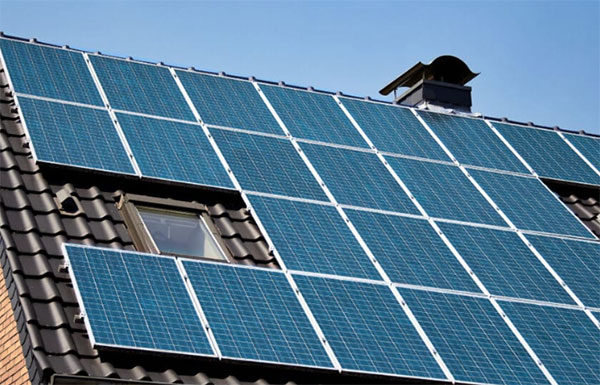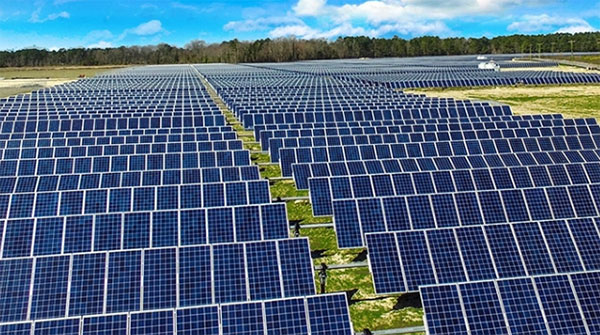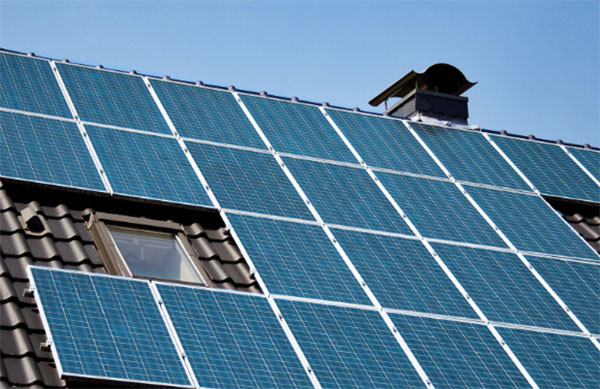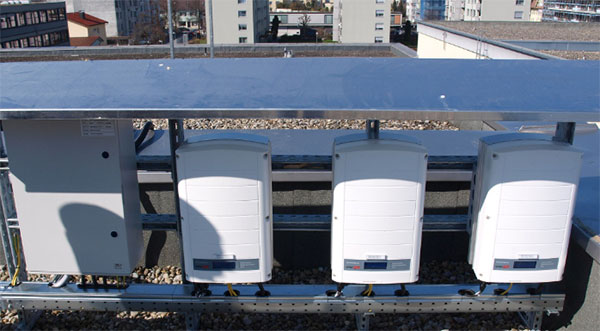Description
The most expensive component of solar panels is the high-purity silicon used in solar cells, due to its complex manufacturing process.Overview of Solar Panel Components
Solar panels are complex assemblies where each component plays a vital role in converting sunlight into electricity. Understanding these components' specifics, including their cost, efficiency, and material quality, can offer insights into what makes the solar panel system expensive.Silicon Solar Cells
Silicon solar cells are the heart of a solar panel, responsible for converting sunlight into electrical energy. The efficiency of these cells typically ranges between 15% and 22%. The cost of silicon solar cells can vary significantly, influenced by purity levels and manufacturing technology. High-purity, monocrystalline silicon cells are more expensive, yet they offer higher efficiency. The cost of silicon has seen fluctuations, with prices per gram affecting overall panel costs.Glass Covers
The glass cover protects the solar cells from environmental elements while allowing sunlight to pass through. Tempered, anti-reflective glass is commonly used, enhancing durability and light transmission. The thickness of the glass, usually around 3mm to 4mm, balances protection with optimal light penetration. The material and processing costs contribute to the glass cover being a notable expense in panel manufacturing.Metal Framing
Metal framing provides structural support, ensuring the panel's durability against physical stresses and environmental conditions. Aluminum is the preferred choice for its strength, lightweight, and resistance to corrosion. The cost of aluminum frames is subject to global metal prices, which can vary but generally represent a smaller portion of the total panel cost.Wiring and Connectors
Wiring and connectors are essential for the transfer of generated electricity. The quality of these components can affect the system's efficiency and safety. Copper, known for its excellent conductivity, is commonly used, though its price can significantly influence the overall wiring costs. Ensuring high-quality, durable connectors also adds to the expense, aiming to minimize energy loss and maintenance needs.Backsheet and Encapsulation Materials
The backsheet and encapsulation materials protect the solar cells from moisture and mechanical damage. The backsheet, typically made from durable polymers like PVF, contributes to the panel's longevity and performance stability. Encapsulation materials, such as EVA, safeguard the cells within, maintaining their efficiency over time. The choice of high-quality materials is crucial, though it increases the manufacturing cost.Cost Analysis of Solar Panel Components
Understanding the cost structure of solar panels is crucial for both manufacturers and consumers. This analysis focuses on material costs, manufacturing processes, and the impact of scale on overall costs, providing a comprehensive look at what goes into the price of a solar panel.Material Costs
Material costs dominate the expenses involved in solar panel production. The primary materials include silicon for solar cells, glass for covers, metals like aluminum for framing, and various polymers for backsheets and encapsulation.- Silicon solar cells: The price of silicon varies widely, depending on its purity and the manufacturing technology used. As of the latest data, the cost of polysilicon can range from $10 to $20 per kilogram, significantly impacting the final cost of solar panels.
- Glass covers: The cost for tempered, anti-reflective glass typically ranges from $3 to $10 per square meter, depending on thickness and quality.
- Metal framing: Aluminum prices fluctuate in the global market, but on average, frame materials can cost between $2 to $5 per linear meter.
- Polymers for backsheets and encapsulation: Costs here are less volatile, with prices ranging from $1 to $3 per square meter for backsheets and $0.5 to $1.5 for encapsulation materials.
Manufacturing Processes
The manufacturing processes add significant value to the raw materials, transforming them into efficient, durable solar panels. This includes costs related to:- Silicon processing: Turning raw silicon into high-purity wafers is energy-intensive and costly, with estimates ranging from $100 to $200 per square meter of solar panel.
- Cell manufacturing: The creation of solar cells from silicon wafers involves sophisticated technology and cleanroom environments, adding approximately $0.5 to $1 per watt to the production cost.
- Assembly and encapsulation: The assembly of cells into panels and their encapsulation for protection contribute another $0.3 to $0.7 per watt.
Impact of Scale on Costs
Scale of production significantly influences the cost efficiency of solar panel manufacturing. Large-scale operations benefit from economies of scale, reducing the cost per unit through:- Bulk material purchases: Larger orders of raw materials can reduce costs by up to 20%.
- Streamlined manufacturing: High-volume production lines are more efficient, potentially lowering processing costs by 15% to 30%.
- Automated assembly: Reducing labor costs and enhancing precision, automation can cut assembly costs by 10% to 25%.
The Role of Silicon in Solar Panel Costs
Silicon stands at the core of most solar panel technologies, with its properties significantly influencing the efficiency and cost of the final product. Understanding the types of silicon used, how silicon purity affects efficiency, and the cost implications of silicon quality provides a comprehensive view of its role in solar panel manufacturing.Types of Silicon Used
- Monocrystalline Silicon: Known for its high efficiency and purity, monocrystalline silicon is made from a single, continuous crystal structure. Solar panels made with monocrystalline silicon have efficiencies ranging from 15% to 22% but come at a higher cost due to the complex manufacturing process.
- Polycrystalline Silicon: Comprised of multiple crystal grains, polycrystalline silicon is less efficient than monocrystalline but cheaper to produce. The efficiency of polycrystalline silicon panels falls between 13% and 16%.
- Amorphous Silicon: Used in thin-film solar panels, amorphous silicon offers the advantage of flexibility and a lower manufacturing cost. However, it has a lower efficiency, typically around 7% to 10%, making it suitable for specific applications where space is not a constraint.
Silicon Purity and Efficiency
- High-Purity Silicon: Essential for achieving high efficiency in solar panels, high-purity silicon allows for a better flow of electricity. The process of purifying silicon, however, is energy-intensive and contributes significantly to the overall cost of the solar panel.
- Impact on Efficiency: The purity level of silicon directly impacts the solar panel's ability to convert sunlight into electricity. Higher purity silicon yields higher efficiency but at a greater cost.
Cost Implications of Silicon Quality
Monocrystalline vs. Polycrystalline: The higher cost of monocrystalline silicon, due to its complex production process and higher purity, results in more expensive solar panels. Polycrystalline silicon, offering a compromise between cost and efficiency, presents a more budget-friendly option. Economies of Scale: Large-scale production has led to a decrease in the cost of silicon, making solar energy more accessible. As of the latest data, the price of silicon has seen a reduction, influencing the overall cost of solar panels and making them a more viable option for renewable energy.Alternatives to Silicon in Solar Panels
Exploring alternatives to silicon in solar panels unveils a world of innovative materials and technologies poised to revolutionize the efficiency and cost-effectiveness of solar energy. These alternatives offer diverse benefits, from reduced manufacturing costs to enhanced performance in low-light conditions.Thin-Film Technologies
- Cadmium Telluride (CdTe): CdTe is a thin-film technology known for its low production cost and short payback time. It offers an efficiency range of 10% to 12%, making it competitive with polycrystalline silicon while being less expensive to manufacture.
- Copper Indium Gallium Selenide (CIGS): CIGS panels provide a higher efficiency of up to 15%, combining good performance with the potential for lower production costs compared to traditional silicon panels. Their flexibility also allows for application on various surfaces.
Perovskite Solar Cells
- High Efficiency: Perovskite solar cells stand out for their remarkable efficiency potential, with laboratory efficiencies exceeding 25%. This surpasses many traditional silicon-based cells, offering a promising future for solar energy.
- Lower Manufacturing Costs: The production of perovskite solar cells involves processes that are potentially cheaper and less energy-intensive than those required for silicon panels. This could lead to a significant reduction in solar energy costs.
Cost-Benefit Comparison
- Initial Cost vs. Long-Term Savings: While thin-film and perovskite technologies may offer lower initial costs, it's essential to consider their lifespan and efficiency over time. Silicon panels, though more expensive upfront, may provide greater durability and long-term energy yield.
- Application Flexibility: Alternative materials like CIGS and perovskite offer flexibility in application, including integration into buildings and wearable technology. This opens new avenues for solar energy beyond traditional rooftop installations.
Strategies for Reducing Solar Panel Costs
The cost of solar panels has been a significant factor in the adoption and implementation of solar energy systems. By focusing on innovations in materials, advances in manufacturing techniques, and leveraging economies of scale, the solar industry aims to make solar energy more accessible and affordable.Innovations in Material Use
Alternative Materials: Research into non-silicon-based materials, such as perovskite and organic photovoltaic cells, shows promise for reducing costs while maintaining or even improving efficiency. Perovskite solar cells, for instance, have achieved efficiencies above 20% in the lab, with the potential for lower production costs compared to silicon-based cells. Recycled Materials: Utilizing recycled materials in solar panel production can significantly reduce material costs. For example, recycled silicon and metals for frames and conductors not only lower expenses but also contribute to the sustainability of solar panels.Advances in Manufacturing Techniques
Printed Solar Cells: The development of printable solar materials allows for the production of solar panels through roll-to-roll manufacturing, similar to printing a newspaper. This technique can dramatically reduce manufacturing costs and time. Automation and Robotics: Implementing automation and robotics in the manufacturing process reduces labor costs and increases production speed and consistency. This advancement leads to lower costs per unit and enhances the quality of solar panels.Economies of Scale in Production
Mass Production: As solar panel manufacturers scale up their production, the cost per unit decreases. This reduction is due to the spreading of fixed costs over a larger number of units and more efficient use of materials and labor. Global Supply Chains: Optimizing global supply chains for sourcing materials and manufacturing solar panels can reduce costs significantly. By accessing lower-cost materials and labor markets, companies can offer competitive pricing on solar panels.Market Trends Affecting Solar Panel Component Costs
The solar panel industry is influenced by various market trends that impact component costs. These trends include supply chain dynamics, regulatory and policy changes, and technological advancements. Understanding these trends is crucial for stakeholders to navigate the market effectively.Supply Chain Dynamics
- Global Supply Chain Fluctuations: The cost of solar panel components is significantly affected by the global supply chain. Factors such as material shortages, logistical challenges, and trade tariffs can lead to increased prices. For example, a shortage in silicon supply can drive up the cost of solar cells.
- Diversification of Supply Sources: Companies are increasingly looking to diversify their supply sources to mitigate risks associated with supply chain disruptions. This strategy can help stabilize component costs but may require initial investments in establishing new supplier relationships.
Regulatory and Policy Influences
- Government Incentives and Subsidies: Policies aimed at promoting renewable energy can lower the cost of solar panel components. Incentives such as tax credits, rebates, and feed-in tariffs directly affect the affordability and adoption of solar technology.
- Environmental Regulations: Stringent environmental regulations can increase production costs by requiring cleaner, but more expensive, manufacturing processes. However, they can also drive innovation in cost-effective and sustainable production techniques.
Technological Advancements
- Innovation in Materials and Manufacturing: Advances in materials science and manufacturing technologies can lead to more efficient and less expensive solar panels. For instance, the development of perovskite solar cells promises higher efficiencies at lower costs compared to traditional silicon-based cells.
- Automation and AI in Production: The integration of automation and artificial intelligence (AI) in manufacturing processes can reduce labor costs and improve production efficiency, contributing to lower overall component costs.


